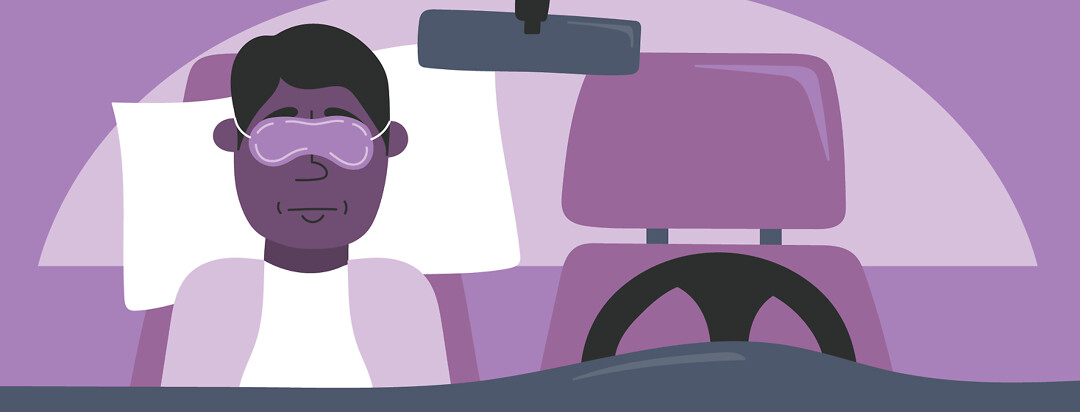Tips for Safely Napping in Your Car With Narcolepsy or Idiopathic Hypersomnia (IH)
When you live with narcolepsy or idiopathic hypersomnia (IH), you often cannot predict the onset of fatigue. Overwhelming exhaustion may strike at any time. While always inconvenient, this can be dangerous when operating a vehicle. Driving fatigued puts both yourself and others on the road at risk.
Fortunately, there are things you can do before you get behind the wheel, as well as steps you can take to safely nap in your car. These tips can help protect yourself and others on the road.
Time your driving
Research shows that accidents that result from fatigued or drowsy driving are most common in the early morning hours and late afternoon. If possible, plan your driving to avoid midnight to 6 AM and hours in the late afternoon. If possible, make use of mass transit or ride-sharing, particularly for the evening commute.1
Know your signs
You are the expert on your body. Learn and pay attention to your body’s cues that fatigue is setting in. Are you yawning more? What did the last billboard advertise? Did you hit the rumble strip? These are signs it is time to pause and rest.2
Napping in your car
Often, the only way to be safe on the road is to pull over and take a 15- to 20-minute power nap. Getting some sleep can refresh you enough to safely finish your drive. It is important to prepare for car napping to get the best benefit from your nap and to safely nap.1
Know the law
If you know your narcolepsy or IH causes you to feel drowsy at particular times when you are often driving, it can be helpful to first know the laws on sleeping in a car. These laws vary by state. Some towns also have their own laws.3
Featured Forum
View all responsesA quick internet search on “(your state) law on sleeping in a car” should give you the information you need. You may also try searching by city name, especially if you live in or near a major city.3
Location, location, location
When exhaustion hits, you do not want to spend time figuring out where to nap. Invest time researching what local and national business chains allow car napping in parking lots. In your town, be familiar with safe neighborhoods and parks. When planning errands, consider what safe locations will be near your route.3
When deciding on a location:3
- Choose the safest location possible.
- Call the store to ask/notify someone of your vehicle and plan to nap.
- When regularly napping in a neighborhood, notify homeowners, if possible.
- On road trips, get to the nearest rest area or exit.
- NEVER pull to the side of the road to nap.
Security encounters
Eventually, someone will regard your car napping as suspicious and contact police or security. Some forethought can help minimize the potential for misinterpreting your actions. It can also aid in keeping you safe:3
- Place a sign in your window to communicate you are intentionally napping, not loitering.
- Keep a medical alert card, driver’s license, and letter from your doctor about your narcolepsy or IH in the seat next to you.
- Nap in the passenger’s seat.
- Lock car doors.
Comfort
To achieve the greatest benefit from your nap, make your car as comfortable as possible for rest. Keep a few items to help napping in your car:3
- Pillow, sleep mask, and blanket offer comfort and a visual to passersby that you are intentionally napping.
- Sun screens, window shades, and sun reflectors keep the car comfortable.
- Heat or air conditioning should be used with caution (and after checking local law). Carbon monoxide poisoning from a running vehicle poses a risk.
Taking these steps can keep you safe while you nap so you can continue your drive without incident.

Join the conversation